Mushy rice is a real morale-breaker, but it happens from time to time. Usually, we get distracted and overcook it, or it could be the rice itself – but what can you do?
Well, as it turns out, you’ve got plenty of options for salvaging or repurposing your rice. All it takes is a little quick thinking and some basic techniques which we’re going to share with you today.
Let’s talk about how to fix mushy rice so that the next time this happens, you’ll be good and ready with all the answers you need!
Bottom Line Up Front
Bottom line, you’ve got 3 options when it comes to mushy rice. The first is avoiding it altogether, but barring this, you’ve got to either dry and reheat it, or you can repurpose it into a dish where the stickiness is a good thing.
Don’t worry – we’ll give you what you need to avoid this in the future and a few tricks for repurposing it – and after that, it’s just a matter of practice and developing a few good habits.
Why rice comes out mushy
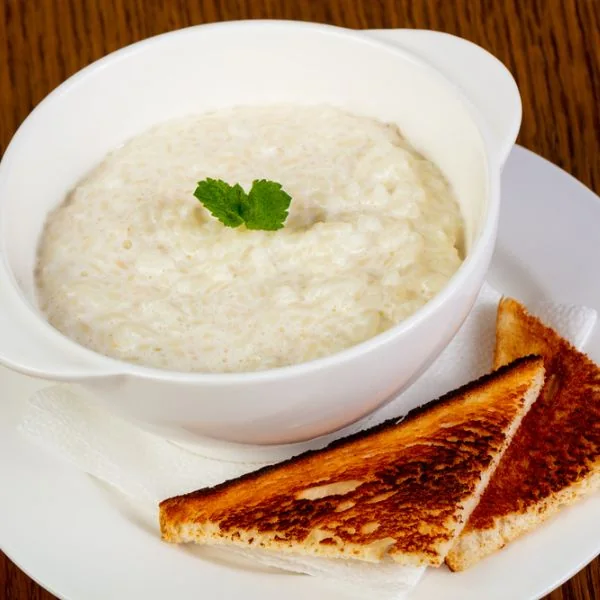
There are a few scenarios where rice is going to turn out mushy, so your first step in determining the root cause is to ask yourself a few simple questions. We’ll elaborate a little on why these are important, but they basically boil down to this:
- Are you using too much water?
- Are you rinsing the rice first?
- Are you overcooking it?
- What type of rice are you using?
Are you using too much water?
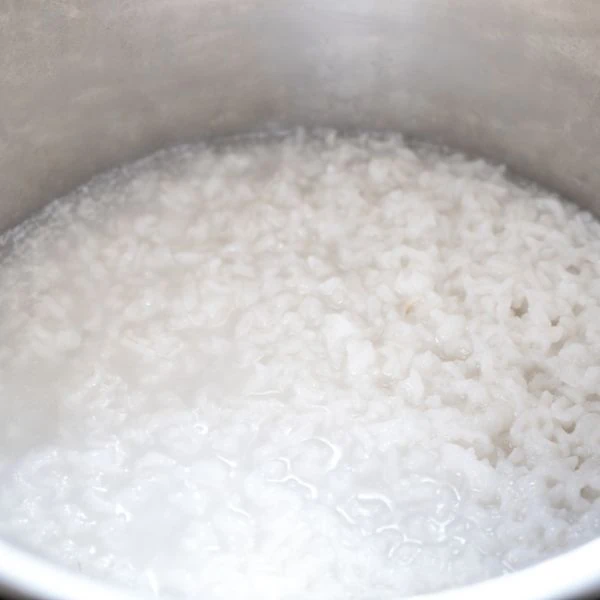
With rice, it’s very important that you use the right amount of water.
Too little, and you might get scorched rice, but too much and it’s going to be watery and quite likely, mushy in the bargain. To simplify things, the amount of water that you should use per cup of rice is as follows:
- Brown rice – For long-grain brown rice, 1 ¾ cups of water per 1 cup of rice, for medium and short grain, 2 cups of water per 1 cup of rice.
- White rice – For long-grain white rice, you need 2 cups of water per 1 cup of rice, and for short-grain white rice, you need 1 ¾ cups of water per each cup of rice.
- Basmati – 1 cup of water is needed per cup of basmati rice.
- Jasmine – 1 ¾ cup of water is needed for each cup of jasmine rice.
- Wild rice – 2 cups of water for each cup of wild rice is ideal.
Are you rinsing the rice first?
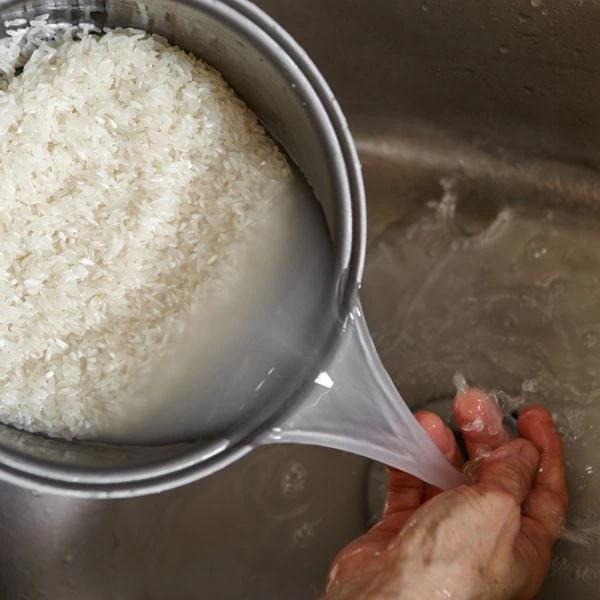
Rice is seriously starchy stuff, especially certain varieties used for ‘sticky rice’, such as Jasmine (more on this, shortly). When it’s refined, the grains are pretty much coated in starch, and the amount can be even higher in varieties such as white rice, where nutrients are added to make it more nutritious.
When that starch cooks, you get a glutinous mess, but you can minimize the chances of this by rinsing the rice first. Yes, it will reduce the nutrition in vitamin-enhanced varieties, but you can make up for that by adding veggies to your meal so that you’re still getting a little nutrition.
It’s not a bad trade-off, really == your rice won’t be mushy and you’ve got a good excuse to eat your vegetables!
Are you overcooking it?
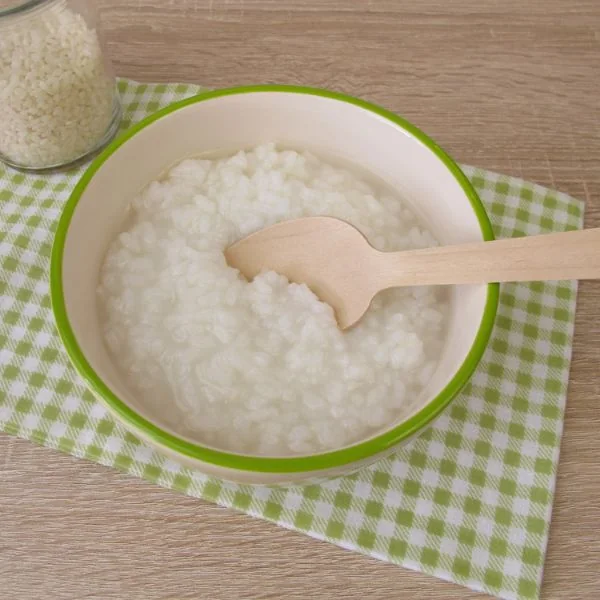
When you cook your rice for too long, then that starch really gets a chance to take on a gelatinous consistency, and if you notice that the grains are broken then you’re really overdoing it. The best way to combat this is to simply read the instructions on the rice packet and follow them to a ‘T’, but it also helps to know exactly how long you should cook the rice, based on the type.
With that in mind, here are the recommended cooking types based on the type of rice:
- Brown rice – Cook for 40 – 50 minutes for all grain types, as Brown rice has a tough bran shell that needs a little extra cooking time.
- White rice – Short-grained white rice needs about 15 minutes of cooking time, while long-grain should have 18 to 20 minutes.
- Basmati – Basmati rice cooks to perfection in approximately 18 to 20 minutes.
- Jasmine – Jasmine rice prefers a more modest 15 to 20 minutes to cook up right.
- Wild rice – Wild rice, like brown rice, is tougher than your average grain, so it takes 45 to 50 minutes to cook all the way through.
What type of rice are you using?
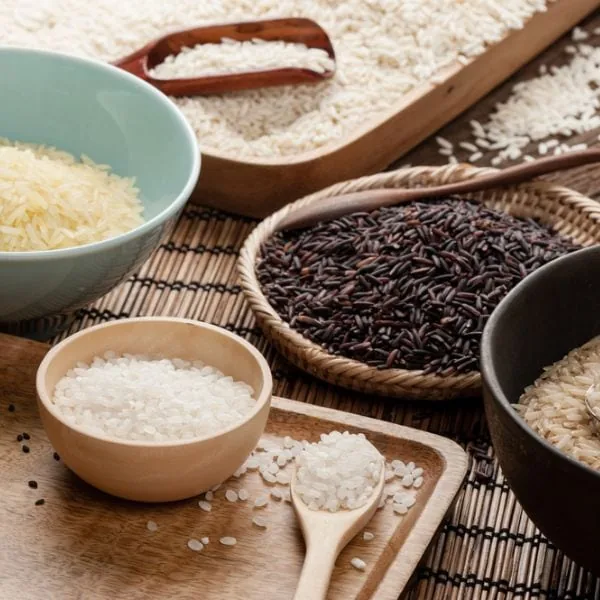
Jasmine, risotto, short-grained white rice.
The type of rice that you are using is going to have an enormous impact on whether or not you end up with sticky, glutinous rice.
Certain varieties, such as jasmine, risotto, and short-grained white rice are considered ‘sticky rice’ and used for exactly that in your favorite restaurants. The stickiness makes them ideal for foods like Sushi and yummy desserts like Filipino Suman (a sugary, coconut-caramel rice bar wrapped in a banana leaf) or classic rice pudding.
If that sticky rice is all that you have stocked at home right now, you can simply rinse it beforehand to reduce the starch, or simply switch gears and go with recipes where the stickiness is a plus.
How to fix mushy rice
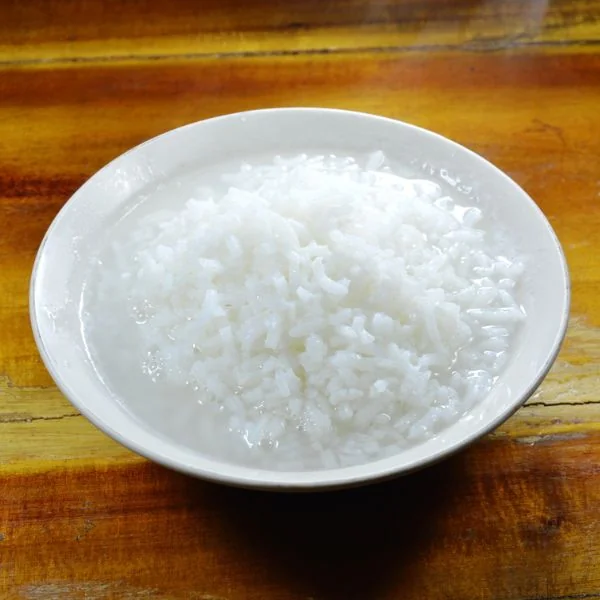
Okay, so we’ve gone over the most common reasons why your rice is coming out more like Jello than the delicious, fluffy grains you were expecting, so let’s take a look at what you can do to fix it when it comes out mushy.
Drain, heat, and let it sit
Sometimes the easiest way to dry out your rice is to simply, well, dry it out! Dump your soggy, gooey rice into a colander and give it a quick rinse to get rice of some of that excess goo. Next, give the pot a quick rinse and put the rice back in, heating it slowly and then cutting off the heat to let it sit.
Keep the lid off of the pot – if the damage is minor, then the heat and evaporation may well fix up your rice after about 10 – 15 minutes.
Dry it in your oven
Preheat your oven to 350 degrees and while it’s heating up, get a nice baking or cookie sheet and give it a few light blasts of non-stick cooking spray across its length. You can use parchment instead and oil that up if you like – that’s up to you.
Next, drain your rice in a colander, giving it a quick rinse to remove the excess starchy film, and dump it onto your sheet. Spread it carefully with a large spoon so that it’s at an even height across the sheet and be careful not to push down too hard – you don’t want it compacted, just loosely spread across.
Now just bake it for about 5 minutes, checking the consistency after this time elapses, and if it’s still a bit on the mushy side, then give it another 5 minutes. With a little luck, this should dry it out nicely for you without making it unappetizing.
Put bread on top
Bread can act as a mild desiccant to help dry out your rice and this also worked to help draw out scorched, burned flavor from your rice if you accidentally overcook it. Simply put a slice or two of bread on top of your rice and let it sit for about 10 minutes, with the lid put on top of your pot.
Some of the excess water will be drawn into the bread and this will help to fix mushy rice if the extra water is the culprit, rather than the starch.
Use a salt bowl
Another way to fix watery rice is to use the ‘original desiccant’ – Salt! Salt has long been used for drying out just about anything you can imagine, but don’t worry – we’re not going to mix it into the rice. Instead, you want to take a small, clean bowl, and pour a little salt inside it, so that you can set it gently on top of your rice in the exact center. Pop the top back onto your pot and let it sit for about 10 minutes so that the salt can pull in as much of that excess moisture as possible in that time.
This will help if you are dealing with a small amount of water but if you have a LOT, then you might want to drain the rice first in a colander, heat it a bit, and then try the ‘salt bowl’ approach.
Stick it in the fridge
If your rice is gummy and broken up into bits in some spots, then this will need a little more drastic action in our attempt to salvage the rice. Transfer it first to a colander, giving it a quick rinse to drain off extra starch, and then spread it on a parchment-lined cookie sheet so that it’s thinned out in an even layer across the sheet.
Place it in your refrigerator for 0 to 30 minutes, or up to 45 if your fridge isn’t set to be super-cold, and when it’s cold to touch then put the sheet on your nearby kitchen counter. Look for clumps of broken bits and separate these, transferring the remaining ‘fairly whole to whole’ rice to a microwave-safe dish with a lid.
Heat it, covered, with 1 tablespoon of water per cup of rice and take it out of the microwave, carefully removing the lid to avoid steam-scorching your hand. Let it sit for a minute or two and then test the fluffiness – this will often fix it up nicely and your rice will be ready to enjoy.
Repurpose it
If you’re having bad luck with the other methods or you simply want to go in a new direction, then you can always repurpose the rice for a more suitable target meal. You have a lot of options – you can fry it up in a wok, for instance, or make a rice porridge or pudding if you like. Today, we’re going to share a fun recipe idea with you that comes straight from the Philippines where your author is currently residing, and it’s well worth a try if you’ve never had it.
You’ll need a few ingredients from the grocery store and you can get the banana leaves at Whole Foods or substitute corn husks in a pinch. That said, here’s how you make an awesome little dessert called ‘Suman’, courtesy of Shobee at ‘The Skinny Pot’ – Note: This recipe is from start to finish, so you’ll need to skip ahead if using already-cooked rice or try simply making this normally, first, to get a feel for it so that you can use this for repurposing in the future!
Ingredients
- 1 cup of white sugar
- 1 can 13.5 oz coconut milk
- 1 ½ tsp salt
- 3 cups glutinous rice
For your Latik sauce
- ½ tsp salt
- 1 cup brown sugar
- 2 cans 1.5 oz coconut milk
Instructions
- Soak your glutinous rice grains for an hour in a large bowl.
- In another large bowl, mix up ¾ cup of white sugar, 1 tsp salt, and your can of coconut milk.
- When your rice has finished soaking, mix it well with your coconut milk mix, and spread it out flat in the biggest skillet you’ve got.
- Cook it on medium heat on your stove, until your coconut milk has evaporated and the rice is about half-cooked.
- Let your rice mix cool down and once it does, wrap it up into the banana leaves or your corn husks like you would with tamales. Once you have tightly wrapped them all, lay them into a shallow saucepan and add water until it just covers the top of each one. Cook it on a light simmer for about an hour to finish cooking the rice.
- When you are ready to serve your Suman, they will look like little soft rice cakes, and you can mix up a sauce for them quickly by combining your coconut milk and brown sugar in a saucepan and cooking it until the sugar is dissolved.
- Add your salt and increase the heat until the mix caramelizes – it will become thicker and sticky and once this happens, you can take it off the heat and drizzle it on the unwrapped Suman bars. If you have leftovers (and you won’t, but we’re being thorough here), you can rewrap them for aesthetics or simply store them in an airtight plastic container to enjoy in the next 3 to 4 days!
FAQs
Before we make our exit, it’s traditional to include some frequently asked questions in an attempt to be as useful as possible. We’ve collected a few ‘mushy rice favorites’ that we hear from time to time so that you can get the answers to these common questions on the subject before we wrap things up!
Is it OK to eat mushy overcooked rice right away?
You can, but it’s not the most pleasant way to enjoy your rice. If you DO, sometimes you can make it a little more palatable with a quick rinse in the colander, and the addition of a pat of butter and maybe a teaspoon of bouillon mixed in. Follow that up with a few minutes on low heat and it will be yummy and a bit less gooey, or simply go with the steps we’ve shared today and you can likely salvage it nicely.
Can overcooked rice make you sick?
If you’ve been letting it sit for a while, then yes, it can make you VERY sick. The problem is a bacteria called Bacillus Cereus, which is hardy stuff that can double its numbers in the space of 20 minutes once the temperature lowers enough.
Mild effects are stomach cramping and diarrhea, while a heavier exposure can lead to full-on food poisoning – so if you’ve overcooked your rice and let it cool then you really shouldn’t be eating it unless it’s been a short time and you’re willing to reheat it. The temperature range to start killing it is over 145 degrees Fahrenheit but to be fair, if you’re worried about it, it’s good practice not to eat it!
Why is my rice mushy but still hard?
This usually results when you aren’t lowering the temperature after achieving a boil. With rice, it’s always the same – bring the water to boiling, reduce the heat to a simmer, and cover the pot. If you maintain a high heat, then your water evaporates, and once you see that there’s less water then it’s easy to assume it’s cooked. Upon tasting it, you find out that the center is chewy, and it’s because the rice didn’t cook throughout.
How do I make mushy rice into rice pudding?
Rice pudding is just about the easy repurpose there is. Add a little milk and heavy cream, followed by a dash or 3 of cinnamon, a couple of drops of vanilla extract, and then sugar to taste with white or brown sugar (and a little butter, if you’re like this author).
The sticky rice sops up all of that delicious flavor and even better, you can chill it in the fridge and it’s fantastic to eat cold!
Some final words on fixing mushy rice
The number one cause of mushy rice is starch content and the next two culprits are overcooking and too much water. Thankfully, you’ve got a number of ways to fix this. Typically you’ll want to rinse it first, followed by baking it or microwaving off some of that excess moisture, and if this doesn’t work then you can always repurpose it into another dish.
Don’t forget that some rice is specifically chosen for its stickiness, such as jasmine, risotto, and short grain white rice, so if these are the kinds that you have in the pantry, then you might want to try a few other varieties until you find your favorite.
The good news, of course, is that mushy rice is definitely salvageable if you use the tips and tricks that we’ve shared today. Like we said, it’s just a matter of practice and developing a few good habits!
References / FYI
Southern Living; “How much water do you need to cook rice?“
Masterclass; Google snippets;”How to fix mushy rice“
Quick Easy Cook; “How to fix mushy rice“





David learned to cook at an early age after his mother told him that he couldn't live on pizza forever, Dave uses his modest kitchen skills to recreate sorely-missed recipes from home and to occasionally make new favorite ones from places he is visiting.